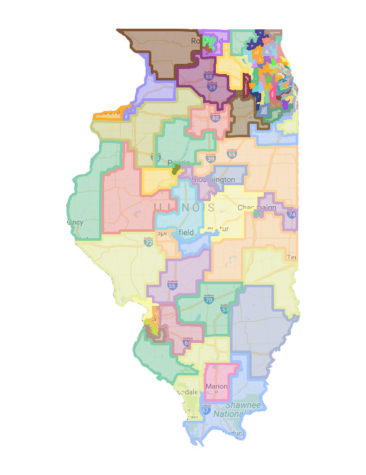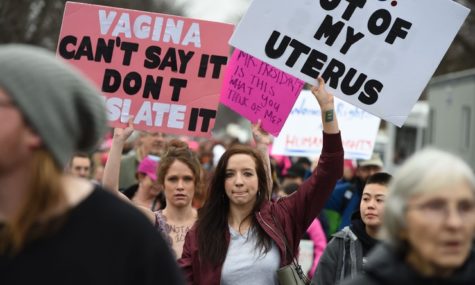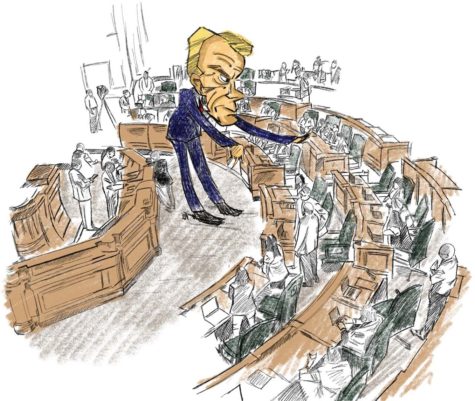A quick education on education funding
Talking points to anticipate in the 2018 campaign cycle
School funding in the state of Illinois has been a topic of serious debate for years. Concerns over adequacy, equity, and pensions take charge.
Back in August, the Illinois General Assembly passed a new school funding bill, SB 1947, which overhauled the established funding system.
SB 1947 implements a new evidence-based funding program in an attempt to alleviate the aforementioned adequacy and equity concerns.
In the world of school financing, adequacy is whether or not students are getting the education they need, while equity is whether or not public schools across the stat receive a fair amount additional funding.
These concepts are used to judge how functional a state’s school funding system is. According to the national education advocacy organization, The Education Trust, in 2005 ranked Illinois school funding system to be the absolute worst in the US as far as equity.
Background
Illinois has long been considered a state with one of the worst and most convoluted school funding equations, across the education board.
For most college students, financial aid can make or break their pursuit of a degree. Having state funding programs allow students to attend college and university without dealing with all the extra thousands of dollars on their plate.
In the 2015-2016 school year, from the Illinois Board of Higher Education, funding for state colleges fell a whopping 61 percent. 60 universities and community colleges started and “tightening their belts,” with drastic cuts underway.
During the budget impasse, collateral damage built up for everyone. Colleges and universities weren’t getting their payments, nor were school districts.
Due to the lack of budget and funding opportunities for the state of Illinois, degree-seeking students won’t pursue their degrees in the state of Illinois.
Local high school students aren’t interested in Illinois schools. Forty-five percent of high school graduates are left Illinois to attend other college and universities in 2015.
“Just over 18,000 students, according to the Illinois Board of Higher Education. That compares with 29 percent who left Illinois for college in 2002,” said Don Rhodes, reporter for the Chicago Tribune.
Pension problem
And students weren’t the only ones impacted. Illinois has the Teacher’s Retirement System (TRS). The state is required by the constitution to pay into the TRS on a regular basis. However, the payments haven’t been so regular.
“Faculty members nearing retirement wonder whether they will receive their pensions because the state has mismanaged its pension funds for decades; it’s now looking at a pension shortfall of about $111 billion,” said New York Times reporter Amy Hassinger.
When the state finds itself in a budget crisis, pension fund contributions tend to fall to the wayside. However, as most students know, the tendency to push the responsibility further down the line rarely proves beneficial.
According to the TRS website, trsil.org, “TRS faces the real risk of future insolvency because of an unfunded liability created by 78 years of insufficient state contributions.”
Recently, the state tried to argue that it’s within state rights to avoid paying into the TRS and similar pension programs during “dire” financial situations. The case went to the Illinois State Supreme Court, which ruled against the state’s argument.
Because the measure forcing the state to contribute to the TRS is part of the constitution, there are only two ways to change it. Either A) write a new constitution or B) propose an amendment to Illinois citizens. Such an amendment, like any other, would be found on an election ballot.
It is unknown at this time whether we can anticipate one in 2018.
The future
What we can anticipate, though, are some serious changes to school funding in general.
K-12 schools have a lot on their plates. The funding overhaul of SB 1947 includes new adequacy targets and a reorganization of vital grants, like those for special education funding.
The Illinois State Board of Education is currently in the process of collecting and analyzing data for schools across the state. Once they’re done, schools will have a “fixed period of time” to review the findings and report back.
“All school districts are still receiving the same state aid amount as last year, thanks to a hold-harmless provision in the new plan,” said Dusty Rhodes, education reporter for NPR Illinois. “But that money only perpetuates the inequitable funding structure that has plagued Illinois schools for decades.”
While the K-12 system works to implement their new funding system, the higher education institutions in Illinois have concerns of their own to address. Beyond state budget issues, potential policies on a federal level may cause some to panic.
Secretary of Education Betsy Devos, has been trying to create policy reforms dealing with funding to schools throughout the U.S.
“I believe every child, no matter their zip code or their parents’ jobs, deserves access to a quality education,” said DeVos, adding, “Why wouldn’t we start afresh and talk about what we need in this century and beyond for educating and helping our young people learn?”
Back in May, she presented her education budget proposal to Congress. The budget suggested cutting $9.2 billion, or 13.5 percent of the previous budget, with the Pell Grant program facing the largest cuts at $3.9 billion overall. Along with suggested cut of the Pell Grant, the budget also discussed the possibility of eliminating the Federal Supplemental Education Opportunity Grant (FSEOG).
The federal cuts are reminiscent of the Monetary Award Program (MAP) grant funding issue from the state budget crisis. MAP grants for public and private schools went unfunded for nine months, from July 2016 to April 2017. Though some schools, including UIS, covered that cost, the lack of funding took its toll and schools couldn’t cover students for long.
With efforts to cut federal funding from Devos, students should keep an eye what the state government does schooling funding.
The future for funding for the state of Illinois isn’t quite clear. Though we have a budget and a new K-12 funding system, that doesn’t necessarily mean that all of the state’s funding flaws are fixed. And those flaws will likely be a focus during 2018 campaigning.



